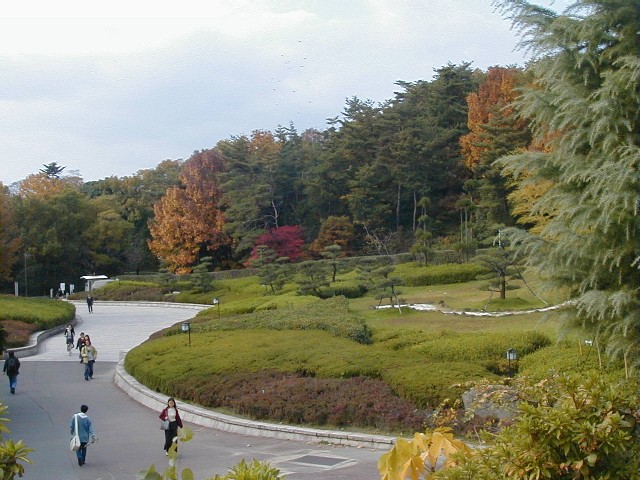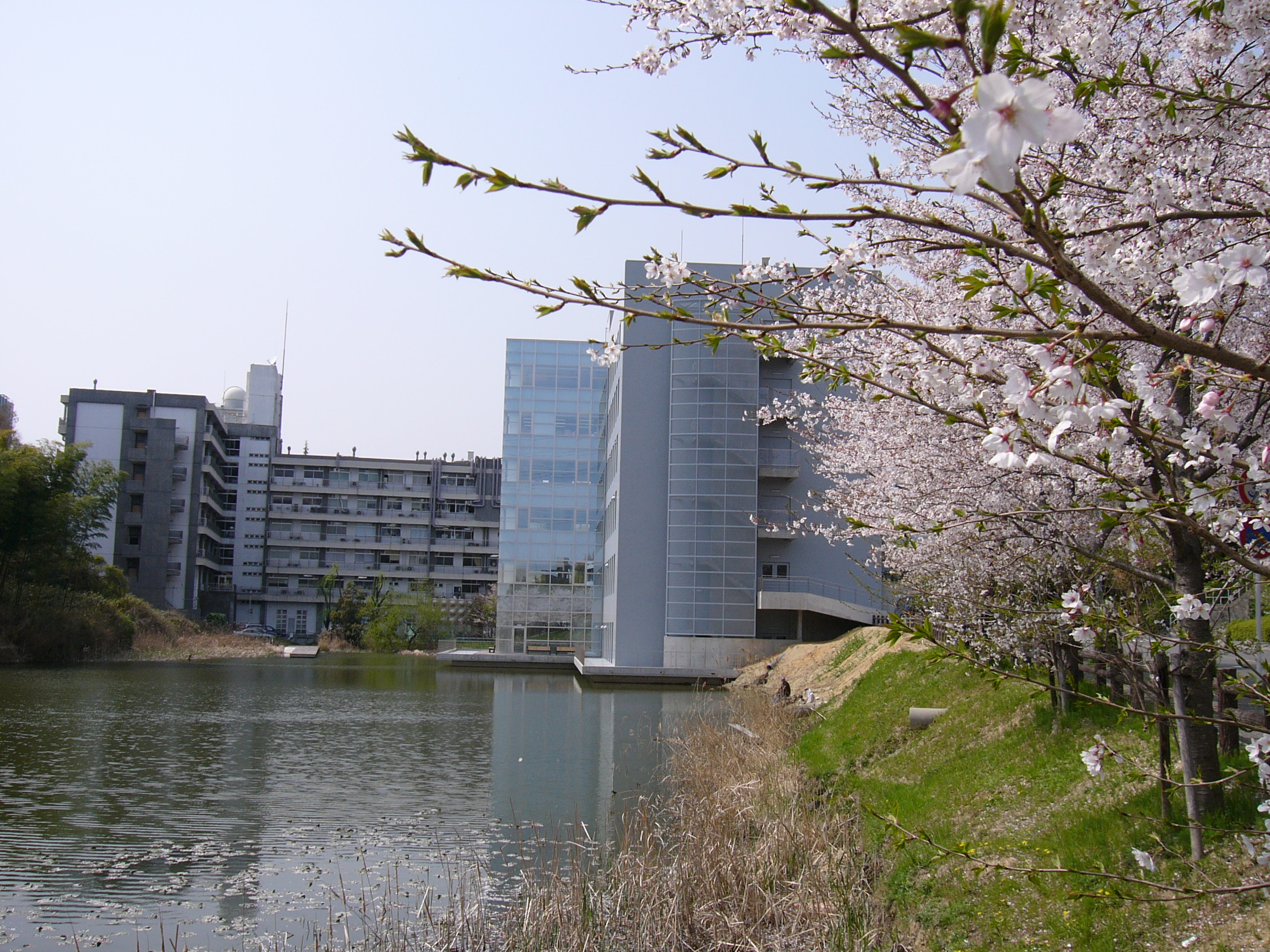
The Osaka University Short-term Student Exchange Program (OUSSEP) was launched in the 1996-97 academic year and will begin its twelfth academic year in the fall of 2007. The program was originally designed to give students from overseas, who do not speak Japanese well, or who have not studied Japanese at all, an opportunity to earn the transferable credits at Osaka University for one year. The participants have been offered special academic lectures taught in English. The University grants credits to the students who attend OUSSEP, for the courses they take at Osaka University, and presents a certificate of completion to the student who successfully completes the requirements of OUSSEP. The credits can be transferred to the student's home university according to the provisions included in the pertinent inter-institutional exchange agreement.
Students who come to OUSSEP, study in a unique international atmosphere. The students come from variety of countries across the world. The eleventh academic year of the program (Fall semester of OUSSEP 2006-2007) admitted thirty seven students from thirty three universities in eighteen countries. Asia-Oceania, North America and Europe are almost equally represented. Students come with different cultural backgrounds and various academic majors.
The revised program, which runs during the 2007-2008 period,
includes three study tracks which enable participants to study flexibly at Osaka
University, with respect to (1) study durations, (2) expected outcomes, and
(3) language used.
Full-year OUSSEP
Osaka University will admit about twenty students who opt to study
in the English speaking program for two semesters (Fall semester of 2007 and
Spring semester of 2008). These students will likely attend the same classes,
join several out-of-classroom activities and develop very close friendships.
Of course, they will also make friends with Japanese students. Students are
expected to broaden their perspectives by studying various subjects outside
the topics studied at their home institutions. Students are expected to earn
at least 15 credits in each semester (30 credits annually), including lectures
in English, independent study and Japanese language class, then transfer them
to their home institutions.
Half-year OUSSEP
This derives from the original annual OUSSEP program (Full-year
OUSSEP). Osaka University will admit students, who opt to join the English speaking
program for one-semester (half-year) only, either in the Fall semester of 2007
or in the Spring semester of 2008. The University will admit, in each semester,
about five of these semester-long participants in OUSSEP. These students are
expected to earn 15 or more credits, including independent study and Japanese
language class, then transfer them to their home institutions.
OUSSEP-AJLs (OUSSEP for Advanced Japanese Learners)
Osaka University has introduced a brand-new exchange scheme for
advanced level Japanese learners, in which the participants join intensive Japanese
classes (advanced level 9~11 lectures a week; non-credit) in the Fall semester
of 2007, and pursue their own subjects with Japanese class-mates or laboratory
colleagues in the Spring semester of 2008 (credited). Note that the minimum
requirement of this course is to have passed Level 2 or above of the 'Japanese
Language Proficiency Test'. The class size of this program would be limited
to five students.
|
Duration |
Lectures |
Credits |
||
OUSSEP (1996~2005) |
September-August |
in English |
O |
|
New OUSSEP (2006~ ) |
Full-year OUSSEP |
September-August |
in English |
O |
Half-year OUSSEP |
September-March April-August |
in English |
O |
|
OUSSEP-AJLs |
September-August |
in Japanese |
X(Intensive Japanese) O(Specialized Subjects) |
|

Osaka University was founded in 1931 by the Japanese Government with strong support from local governments in the Osaka area. It was established with the aim of creating a center of higher education inheriting the liberal and progressive academic tradition of the Osaka area that had been the center of trade for the nation for many centuries. In April of 2004, it became one of 84 national university incorporations founded under the National University Law that resulted from the recent national university reform plan in Japan.
 Administration building (right) and ISC, Suita |
 Machikane-yama Garden, Toyonaka |
The University now (as of January, 2007) comprises ten undergraduate schools, fifteen graduate schools, the Institute for Higher Education Research and Practice, five research institutes, seventeen education and research centers, and two hospitals attached to the Faculty of Medicine and the School of Dentistry. Around twelve thousand undergraduates plus eight thousand graduate students, including about one thousand foreign students, are enrolled. There are approximately two thousand five hundred academic staff and two thousand administrative and supporting staff.
 Mono-rail access between two campuses |
 Ginkgo Hall, Faculty of Medicine, Suita |
 Engineering Bruildings, Suita |
 Toyonaka Main Gate |
The University comprises two main campuses, one in Suita (a northern suburb of Osaka) and the other in Toyonaka (a northwestern suburb of Osaka), with a combined area of one hundred and fifty hectares (three hundred and seventy acres). Furthermore, the University maintains a downtown extension, the Nakanoshima Center, and three overseas offices, in the US (San Francisco), in the Netherlands (Groningen) and in Thailand (Bangkok).
In October 2007, Osaka University will be integrated with Osaka
University of Foreign Studies in the city of Minoh, almost three kilometers
north of the Suita campus. Osaka University of Foreign Studies focuses on foreign
language, world cultures and area studies. As a result, Osaka University will
consist of eleven undergraduate schools and fifteen graduate schools. In addition,
some new research institutions will be added. Furthermore, Osaka University
will be expanded to three main campuses. The number of the students of the new
Osaka University will be more than twenty-four thousands. In the Academic Year
of 2008, therefore, Osaka University will become one of the most comprehensive
and internationalized research universities in Japan as well as in the world.
More information about Osaka University may be found at the following web site:<http://www.osaka-u.ac.jp>
Regular Short-term Exchange Programs In addition to the OUSSEP program, there are two types of regular
short-term (i.e. less than one academic year) exchange programs at Osaka
University. |
A student who attends OUSSEP is enrolled in one of the undergraduate*
or graduate schools** of Osaka University as a Special Auditor*** Student. The
International Affairs Committee, which is made up of faculty members representing
a variety of University institutions, is responsible for the management of OUSSEP.
The International Student Center (ISC) is in charge of coordinating the program
and takes care of the students in collaboration with the institutions. Two faculty
members, who belong to the ISC, are appointed as the OUSSEP coordinators. They
are responsible for the actual day-to-day operation of the program. The Student
Exchange Promotion Division of the Administration Bureau of the University takes
care of administrative matters pertaining to the program.
***A "Special Auditor" refers to an exchange student who attends classes and is graded on course work, exams, etc. but does not pursue a degree.
| Undergraduate schools* | Graduate schools** | |
| Dentistry | X | X |
| Economics | X | X |
| Engineering | X | X |
| Engineering Science | X | X |
| Human Sciences | X | X |
| Law | X | |
| Law and Politics | X | |
| Letters | X | X |
| Medicine | X | X |
| Pharmaceutical Sciences | X | X |
| Science | X | X |
| International Public Policy | X | |
| Language and Culture | X | |
| Information Science and Technology | X | |
| Frontier Biosciences | X | |
| Law (Law School) |
X indicates an institution in which a student may be enrolled.
 |
New Student Union, Toyonaka Campus |
 |
Medical Science Bruildings, Suita Campus |
The academic year for regular educational programs in most Japanese universities, including Osaka University, begins in April and ends in March. However, the OUSSEP year, which is divided into two 15-week semesters, runs from late September until early August of the following year. Participants of Full-year OUSSEP and OUSSEP for Advanced Japanese Learners should follow this OUSSEP academic calendar. Half-year OUSSEP participants will join either of these 15-week semesters; September-February or April-August.
|
|||||||||||||||||||||||||||||||||||||||
Spring semester schedules can be revised, in accordance with the Osaka Universityfs
2008 academic year calendar, which will be finally approved in mid-2007.